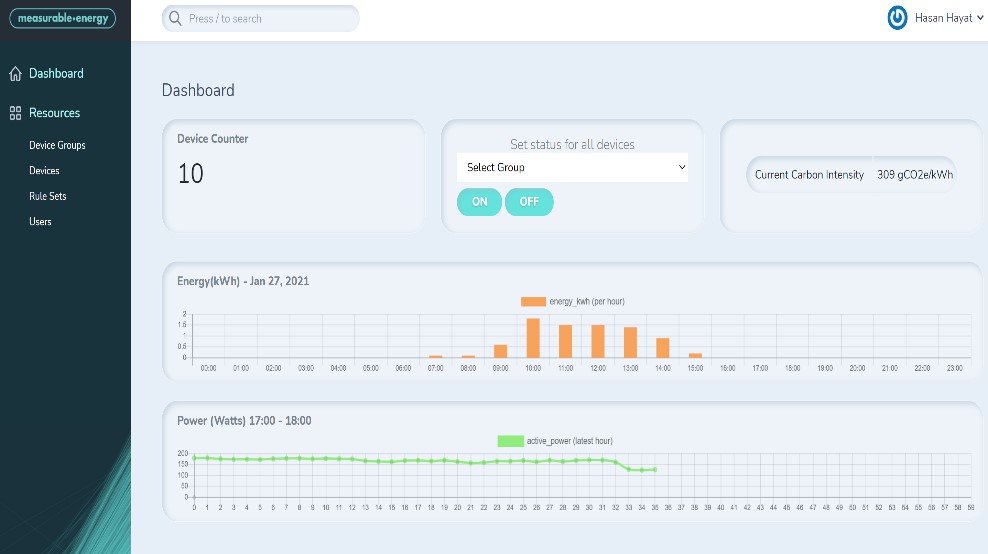
Case Study: Smart Energy Monitoring in Buildings with Measurable Energy
Overview
SPECIFIC offers companies with innovative, low-carbon technologies valuable insight and performance data to improve their existing products or processes.
measurable.energy (m.e) have developed a platform to offer consumers real-time energy and GHG emissions monitoring, automated controls and data driven actions so they can optimise their building energy performance and lower carbon emissions.
Over a period of 3 months, we conducted an extensive data acquisition and validation study at several locations associated with SPECIFIC, Swansea University, using smart energy monitoring hardware (m.e smart sockets) and software (m.e Hub) provided by the project partner.
The m.e power sockets have been designed to communicate with a Machine Learning (ML) platform to identify potential energy savings and are interfaced with the National Grid Carbon Intensity API. In addition, the sockets have a coloured LED indicator to visualise the current grid carbon value, allowing users to make a conscious decision on when they consume energy based on how “green” the grid electricity is.
Project partners: measurable.energy
Aims
- Data acquisition: through 10 m.e sockets installed and setup by 5 SPECIFIC staff members in their respective home office environments
- Data verification: data acquired using the m.e power sockets will be verified using both custom-built and off-the-shelf hardware and associated software components
- Wi-Fi enterprise network testing: to identify requirements and carry out testing for connection to secure Wi-Fi enterprise networks as might be found in large scale offices and public sector organisations, e.g. the University’s Eduroam network
- Collaboration with SPECIFIC’s external partners
Impact
- Recorded data will now be utilised by m.e to optimise their existing system which will subsequently aid in developing and bringing their current and future products to market
- Data verification demonstrated the importance of calibrating the m.e smart sockets to accurately measure Current (A) if they are to be used for verifiable energy savings data
- Prior to this project, the m.e power sockets were only compatible with non-enterprise network authentication schemes, such as WPA2. However, they are now compatible with large enterprise Wi-Fi networks.
- Following introductions with KIER, m.e successfully undertook a separate pilot study at the Active Classroom building at Swansea University.


Figure 1. (left) Measurable power sockets with ‘red’ and ‘green’ Impact Indicator LEDs to indicate how ‘clean’ the local electricity grid is in terms of GHG emissions. (right) The Measurable Hub; the main control software for Measurable power sockets.


Figure 2. (left) Custom-built Controllable AC Load Emulator device to test and calibrate m.e socket data. (right) Example of the experimental setup with the lid removed to allow direct connection.